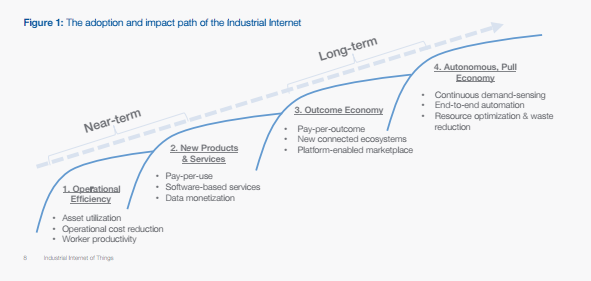Vikas Singh, Technical Director at Bluefin Technology Partners with 25+ years of experience in the...
The Industrial Internet of Things
The Opportunities in the Industrial Internet of Things (IIoT)
Just like the consumer IoT, the true value for brands and companies is in the data that the devices and beacons produce. The consumer IoT tracks product usage and sends that data back to brands so they can fine tune their products to maximize consumer use and happiness. The industrial Internet of Things is not much different. The implementation of IIoT will bring in a major influx of data, it is how these industries and corporations implement the data that will bring a company into Industry 4.0.
The industrial internet of things is essentially the implementation of IoT across broad ranges of industries. History tells us that the early adopters of new tech are typically consumer facing product companies. However, the IoT is not just limited to consumer goods. IIoT will make it's way into all facets of industry both internally facing (B2B, operations, sales etc..) and consumer facing.

Industrial Internet of Things Timeline
The World Economic Forum sites Four logical next steps and opportunities for the Industrial Internet of Things in their 2015 Industry Report.
-
Operational EfficiencyAs mentioned before, this value is created and anchored by the capturing of data of various degrees. Up until now, operations managers in major manufacturing corporations have had to measure employee success by two simple formulas; Utilization and Efficiency of both the system and of the employee. However, now with the massive amount of data that can be obtained by the various sensors that will be implemented amongst the manufacturing process, more than just efficiency and utilization can be tracked. Individual machines can now be tracked. This will drastically decrease overhead by being able to track the use of a machine and know when maintenance will be needed before a potential breakdown as well as allow managers to track use and activity of employees on the manufacturing floor.
-
New Products and ServicesThe implementation of the industrial internet of things will allow for a whole new subset of products and services previously not thought of in the industrial space. Similar to the outcome, where consumers are allowed to pay-per-outcome. In opportunity, consumers are able to pay-per-use of the product. The most common application of this in today consumer IoT world is to pay a subscription fee on top of the initial purchase price of a good. However, in the industrial internet of things, the same model can be applied to manufacturing machines, parts, analysis tools, etc…
-
Outcome EconomyThe “Outcome Economy” is essentially the idea that instead of a company charging for the initial purchase of a device, piece of equipment, or application, they will be able to pay-per the outcome of use of the purchase. For example, if you were to purchase a piece of equipment that promised a value of doubling the production speed of x previous piece of equipment, however, in practice the product does nothing of the sort, consumers will be able pay less for their underperforming products.
-
Autonomous, Pull EconomyThe World Economic forum specs that in the long term, there will be an autonomous revolution which will create a pull economy. This Industrial revolution will coincide with autonomous revolution happening in the consumer space with the products such as the autonomous car that Google (and others) are developing. This “pull economy” will result in continuous demand-sensing. Which will allow for automatic updates, improvements, alerts etc… in much better timing than current standards. This will result in resource optimization and waste reduction as well as the possibility of end-to-end automation.
Of course the implications of IIoT go far beyond this article and the report it sites. As the Internet of things matures and grows, IIoT will follow along. The improvements and implications that are due to stem from the data gathered in Industry 4.0 are going to be incredibly exciting. Industry leaders must assess their manufacturing process and decide that now is the time to put the investment forward to implement IoT in their processes.
